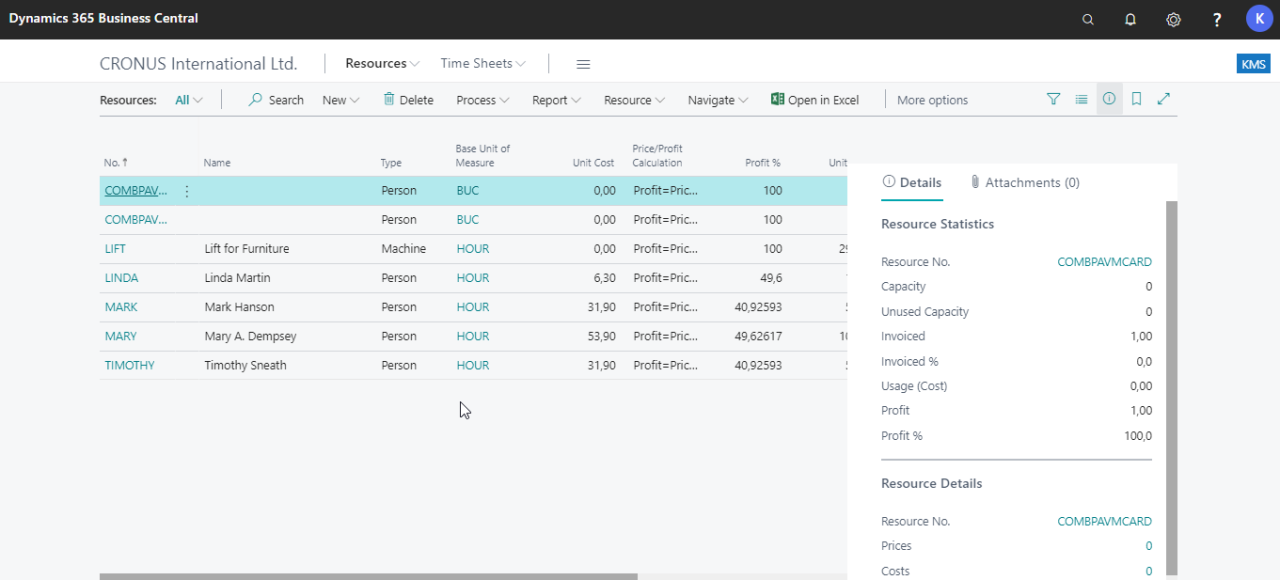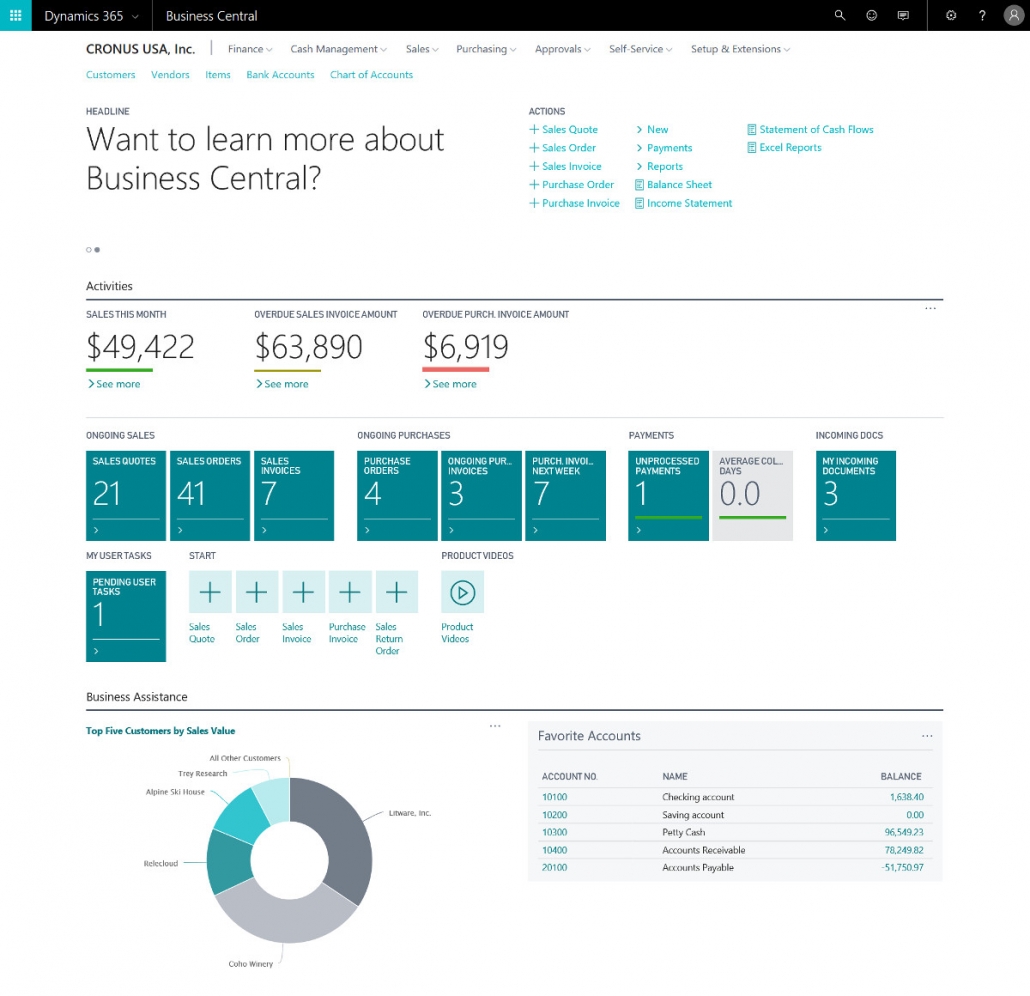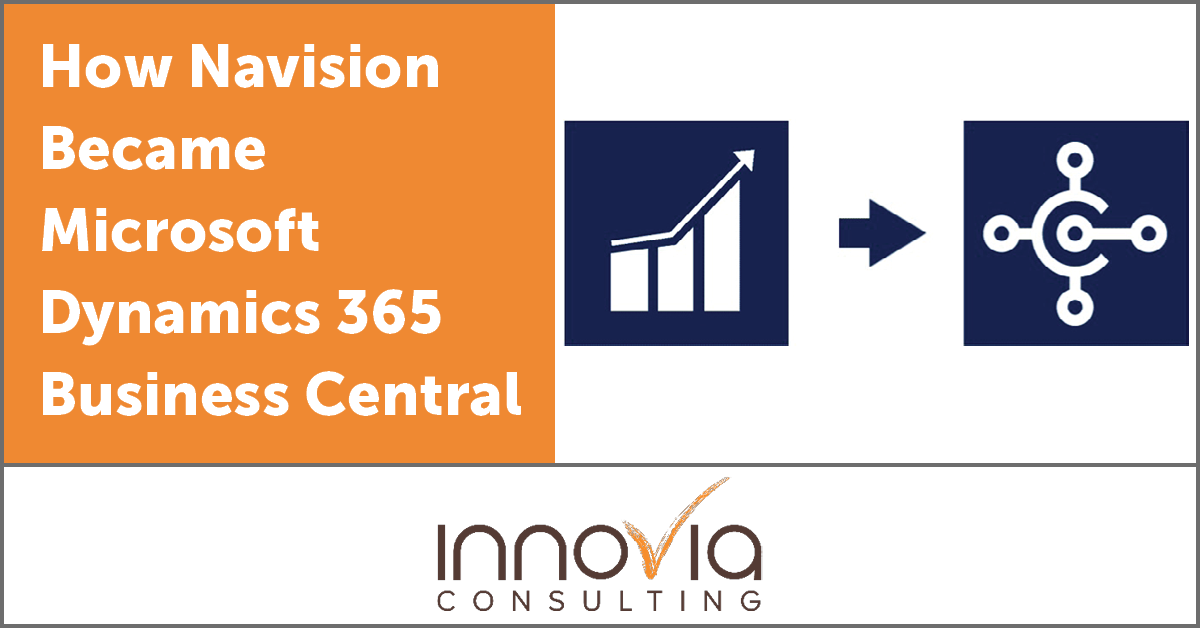Navision 365 is at the forefront of modern business management solutions, offering a suite of functionalities designed to streamline operations and enhance productivity.
With its rich history rooted in the evolution of enterprise resource planning software, Navision 365 has integrated seamlessly with other Microsoft products, providing businesses with a powerful tool to adapt to the ever-changing market demands.
Overview of Navision 365

Navision 365, now branded as Microsoft Dynamics 365 Business Central, is an integrated business management solution designed for small to medium-sized enterprises (SMEs). It combines core functionalities essential for managing various business operations, such as finance, sales, service, and operations, all within a unified platform. This comprehensive solution not only enhances productivity but also offers a scalable framework to grow alongside businesses.The evolution of Navision software began in the late 1980s when it was developed by a Danish company, Navision Software A/S.
Implementing ax erp can significantly enhance operational efficiency for businesses by streamlining processes and providing valuable insights. This powerful tool helps organizations manage resources effectively, ensuring smoother workflows. Furthermore, for businesses looking to leverage the power of technology, erp cloud oracle offers a robust solution that combines flexibility and scalability, ideal for today’s fast-paced market.
Originally designed for accounting and financial management, the software underwent significant transformations through various acquisitions and product enhancements. In 2002, Microsoft acquired Navision, integrating it into its suite of enterprise resource planning (ERP) software. The rebranding to Dynamics NAV and further transition to Dynamics 365 Business Central marked a pivotal moment in its evolution, aligning the platform with cloud technologies and Microsoft’s broader business ecosystem.
Core Functionalities of Navision 365
Navision 365 offers a wide array of functionalities that empower businesses to streamline their operations effectively. These core functionalities include:
- Financial Management: This module covers essential accounting processes, ensuring accurate bookkeeping and compliance with financial regulations.
- Supply Chain Management: Users can efficiently manage inventory levels, vendor relationships, and order fulfillment processes, which contribute to better operational efficiency.
- Sales and Service Management: The platform supports sales processes from lead generation to order processing and customer service management, facilitating improved customer relationships.
- Project Management: Businesses can plan, execute, and monitor projects, allocating resources and budgeting effectively.
- Business Intelligence: With integrated analytics and reporting tools, organizations can gain insights from their data to make informed decisions.
Integration Capabilities with Other Microsoft Products
Navision 365 is designed to seamlessly integrate with a range of Microsoft products, enhancing its functionality and user experience. The integration capabilities include:
- Office 365: Users can leverage applications like Excel and Outlook to enhance productivity, such as importing data or managing communications directly from the ERP system.
- Power BI: This integration enables advanced business analytics and visualization of data, allowing users to create interactive reports and dashboards.
- Microsoft Teams: Integration with Teams facilitates collaboration among employees, enabling real-time communication and document sharing relevant to business processes.
- Azure Services: Businesses can utilize Azure for enhanced cloud computing capabilities, data storage, and security, ensuring scalability and accessibility.
“Integrating Navision 365 with Microsoft products creates a cohesive environment that fosters efficiency and collaboration across all business functions.”
Key Features of Navision 365

Navision 365, a comprehensive business management solution, provides organizations with an array of features designed to enhance operational efficiency and decision-making. Its modular architecture allows users to tailor the system to meet specific business needs, ensuring that organizations can adapt to changing market conditions and demands. Below, we will explore the key modules available in Navision 365, the advantages of its cloud-based solutions, and the robust reporting and analytics tools it offers.
Modules Available in Navision 365
Navision 365 comprises several modules that cater to diverse business functions, facilitating streamlined processes and improved management. The following modules are integral to the software:
- Finance Management: Streamlines financial operations including budgeting, forecasting, and reporting.
- Supply Chain Management: Provides tools for inventory management, procurement, and order processing.
- Sales and Marketing: Enhances customer relationship management, lead generation, and sales tracking.
- Project Management: Assists in planning, tracking, and managing projects efficiently.
- Manufacturing: Supports production planning, scheduling, and quality control.
- Human Resources: Manages employee data, recruitment, and performance evaluation.
- Customer Service: Facilitates support management, service agreements, and customer interaction tracking.
Each module is designed to integrate seamlessly, allowing for better data flow and collaboration across departments.
Benefits of Cloud-Based Solutions in Navision 365
The cloud-based architecture of Navision 365 presents numerous advantages, making it a suitable choice for modern businesses. Transitioning to a cloud environment enables organizations to take advantage of several key benefits:
- Accessibility: Users can access the system from anywhere, facilitating remote work and collaboration.
- Scalability: Businesses can easily scale resources up or down based on their needs without significant investments in hardware.
- Cost-Effectiveness: Reduces the need for extensive on-premises infrastructure and associated maintenance costs.
- Automatic Updates: Ensures that users always have access to the latest features and security patches without manual intervention.
- Enhanced Security: Leading cloud providers implement robust security measures to protect sensitive data.
These benefits contribute to a more agile and responsive organizational structure, aligning IT capabilities with business objectives.
For companies aiming to optimize their operations, exploring erp cloud oracle can be a game-changer. This cloud-based platform delivers comprehensive tools that support growth and adaptability in an ever-evolving business landscape. Additionally, integrating ax erp provides the necessary infrastructure to manage resources efficiently, thereby maximizing productivity and ensuring sustainability.
Reporting and Analytics Tools within Navision 365
Navision 365 offers powerful reporting and analytics tools that enable businesses to derive actionable insights from their data. These tools enhance decision-making processes by providing a clearer understanding of business performance.The reporting capabilities include:
- Customizable Dashboards: Users can create personalized dashboards that display key performance indicators (KPIs) relevant to their roles.
- Power BI Integration: This integration allows for advanced data visualization, combining data from various sources to create comprehensive reports.
- Real-Time Reporting: Instant access to up-to-date data supports timely decision-making and operational adjustments.
- Data Analysis Expressions (DAX): A powerful formula language used in Power BI and Excel to perform complex calculations and data analyses.
- Built-in Templates: Predefined report templates simplify the reporting process, enabling quick generation of standard reports.
With these tools, organizations can monitor trends, assess performance, and identify areas for improvement efficiently.
In today’s dynamic business environment, implementing an efficient solution like ax erp can significantly enhance operational processes. This software streamlines various functions, enabling organizations to make informed decisions. Additionally, with the rise of technology, transitioning to an erp cloud oracle system offers unparalleled flexibility and scalability, ensuring businesses remain competitive in the ever-evolving market.
Implementation Strategies for Navision 365

Implementing Navision 365, also known as Microsoft Dynamics 365 Business Central, requires careful planning and execution to ensure that the software meets the specific needs of the business. By following a structured approach, organizations can maximize the benefits of the platform while minimizing disruption to operations.Successful implementation begins with thorough assessments and planning processes, which help in understanding the current state of business operations and defining the desired outcomes.
Below, a step-by-step guide Artikels the essential strategies for implementing Navision 365 effectively.
Step-by-Step Guide for Implementing Navision 365
A systematic guide is crucial for a successful implementation of Navision
365. The steps include
- Define Business Objectives: Identify the core objectives that the organization aims to achieve with Navision 365, such as increased efficiency, better financial management, or improved customer relationships.
- Conduct Pre-Implementation Assessments: Evaluate existing processes and systems to identify gaps and opportunities for improvement. This assessment should include a review of current software, workflows, and user needs.
- Engage Stakeholders: Involve key stakeholders from various departments to ensure that the implementation aligns with the broader business strategy and to gather diverse insights.
- Select an Implementation Partner: Choose a certified Microsoft partner with experience in deploying Navision 365. Their expertise can provide guidance and streamline the implementation process.
- Develop a Project Plan: Create a detailed project plan that Artikels timelines, milestones, resources, and responsibilities. This plan should include risk management strategies.
- Configure and Customize: Customize Navision 365 to meet the specific requirements of the business. This may include setting up workflows, dashboards, and reporting features.
- Data Migration: Transfer relevant data from existing systems to Navision 365. Ensure data integrity and accuracy throughout this process.
- Testing: Conduct extensive testing to identify and resolve any issues before going live. This includes user acceptance testing to ensure that the system meets user expectations.
- Training and Support: Provide comprehensive training for staff on how to use the new system effectively. Establish ongoing support to address user queries and issues.
- Go Live: Launch Navision 365 and monitor the implementation closely to ensure a smooth transition. Be prepared to make adjustments based on user feedback.
Best Practices for Training Staff on Navision 365 Functionalities
Effective training is essential to ensure that employees can fully leverage the capabilities of Navision
365. Implementing these best practices can significantly improve user adoption and satisfaction
“Proper training not only enhances user confidence but also maximizes the return on investment in technology.”
Training should be structured, engaging, and accessible. Consider the following practices:
- Tailored Training Programs: Develop training programs that cater to different user roles and levels of expertise, ensuring that all employees receive relevant and comprehensible instruction.
- Hands-On Learning: Encourage practical, hands-on training sessions where employees can interact with the system in a controlled environment, promoting active learning.
- Utilize Online Resources: Provide access to online tutorials, documentation, and webinars that employees can refer to at their own pace.
- Establish Mentorship: Pair experienced users with new employees to facilitate knowledge sharing and foster a supportive learning environment.
- Regular Feedback: Collect feedback from users about the training process and make adjustments as needed to improve future training sessions.
Necessary Pre-Implementation Assessments and Planning Processes
Prior to implementing Navision 365, it is vital to conduct comprehensive assessments and planning processes. These steps establish a strong foundation for the deployment:
“Thorough assessments ensure that the implementation aligns with strategic business goals and addresses the unique needs of the organization.”
Key assessments and planning processes include:
- Current State Analysis: Analyze existing workflows, systems, and technology to identify inefficiencies and areas for improvement that Navision 365 can address.
- Stakeholder Interviews: Conduct interviews with stakeholders from various departments to gather insights on their needs and expectations from the new system.
- Requirements Gathering: Collect detailed requirements for functionalities, processes, and reporting to ensure that the implementation aligns with business objectives.
- Change Management Strategy: Develop a change management strategy to address potential resistance and prepare the organization for the transition to Navision 365.
These elements are critical to ensuring that the implementation of Navision 365 is not only successful but also sustainable in the long term.
Challenges and Solutions with Navision 365
The adoption of Navision 365 brings numerous benefits to businesses, but it is not without its challenges. Organizations often encounter various hurdles during the implementation and operational phases. Understanding these challenges and their corresponding solutions is critical for ensuring a smooth transition and maximizing the platform’s potential.
Common Challenges Faced by Businesses
Businesses frequently encounter several key challenges during their adoption of Navision
365. These challenges can impede the effectiveness of the system if not addressed properly. The following points detail these common challenges
- User Resistance: Employees may resist changes to their established workflows, leading to decreased productivity and morale.
- Integration Issues: Integrating Navision 365 with existing systems and processes can create compatibility issues that hinder efficient operations.
- Data Quality Concerns: Inaccurate or inconsistent data can plague the system, resulting in erroneous reporting and decision-making.
- Training and Skill Gaps: Limited employee familiarity with the platform can result in ineffective use and underutilization of Navision 365 capabilities.
- Cost Overruns: Implementation and ongoing maintenance costs may exceed initial projections, straining budgets.
Solutions for Data Migration Issues
Data migration is a critical phase in the Navision 365 adoption process. Businesses frequently face difficulties during this stage that can jeopardize the integrity of their data. Effective strategies can help mitigate these concerns:
- Detailed Migration Planning: Conduct thorough assessments and create a comprehensive migration plan that Artikels data sources, formats, and transformation requirements.
- Data Cleansing Procedures: Implement data cleansing processes prior to migration to ensure data accuracy and consistency, reducing issues post-migration.
- Testing and Validation: Carry out rigorous testing of migrated data to validate its accuracy and functionality within the new system.
- Incremental Migration: Consider a phased approach to data migration, allowing for adjustments and corrections before full deployment.
Strategies for Ongoing Support and Maintenance
Once Navision 365 is implemented, ongoing support and maintenance become essential for sustained success. Strategic approaches can enhance the system’s longevity and effectiveness:
- Establish a Support Team: Designate a dedicated support team responsible for addressing user queries, troubleshooting issues, and facilitating updates.
- Regular Training Sessions: Schedule ongoing training sessions for employees to ensure they are proficient in utilizing new features and functionalities.
- Feedback Mechanisms: Implement feedback channels to gather user input on system performance and areas for improvement, allowing for continuous enhancements.
- Routine System Audits: Conduct regular audits to identify areas of inefficiency or potential upgrades, ensuring that the system remains optimized.
“A proactive approach to system maintenance not only enhances performance but also boosts user confidence in utilizing Navision 365.”